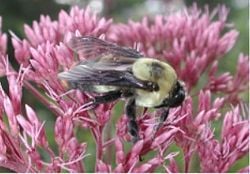Coevolution

In biology, co-evolution is the mutual evolutionary influence between two species. Each party in a co-evolutionary relationship exerts selective pressures on the other, thereby affecting each others' evolution. Co-evolution includes the evolution of a host species and its parasites, in examples of mutualism evolving through time. Few perfectly isolated examples of evolution can be identified. Evolution in response to abiotic factors, such as climate change, is not coevolution (since climate is not alive and does not undergo biological evolution). Evolution in a one-on-one interaction, such as that between a specialized host-symbiont or host-parasite pair, is coevolution. But many cases are less clearcut: a species may evolve in response to a number of other species, each of which is also evolving in response to a set of species. This situation has been referred to as "diffuse coevolution". And, certainly, for many organisms, the biotic (living) environment is the most prominent selective pressure, resulting in evolutionary change.
Examples of co-evolution include pollination of Angraecoid orchids by African moths. These species co-evolve because the moths are dependent on the flowers for nectar and the flowers are dependent on the moths to spread their pollen so they can reproduce. The evolutionary process has led to deep flowers and moths with long probosci.
Co-evolution also occurs between predator and prey species as in the case of the Rough-skinned Newt, Taricha granulosa, and the common garter snake, Thamnophis sirtalis. In this case, T. granulosa newts produce a potent nerve toxin that concentrates in their skin. T. sirtalis garter snakes have evolved resistance to this toxin through a set of genetic mutations, and prey upon the newts. The relationship between these animals has resulted in an evolutionary arms race that has driven toxin levels in the newt to extreme levels. (see Red Queen).
Co-evolution does not imply mutual dependence. The host of a parasite, or prey of a predator, does not depend on its enemy for persistence.
Co-evolution is also used to refer to evolutionary interactions between and even within molecules in the field of molecular evolution (for example, between hormones and receptors). This usage has existed at least since the term "molecular coevolution" was coined by Gabriel Dover in 1984. Dover claims that there is a third force in evolution, operationally distinct from natural selection and neutral drift, which he termed "molecular drive". According to Dover it explains biological phenomena that natural selection and neutral drift alone cannot explain, such as the 700 copies of a ribosomal RNA gene and the origin of the 173 pairs of legs of the centipede [1].
The existence of mitochondria within eukaryote cells is an example of co-evolution as the mitochondria has a different DNA sequence than that of the nucleus in the host cell. This concept is described further by the Endosymbiotic theory.
Co-evolutionary algorithms are also a class of algorithms used for generating artificial life as well as for optimization, game learning and machine learning. Pioneering results in the use of co-evolutionary methods were by Daniel Hillis (who co-evolved sorting networks) and Karl Sims (who co-evolved virtual creatures).
In his book The Self-organizing Universe, Erich Jantsch attributed the entire evolution of the cosmos to co-evolution.
In astronomy, an emerging theory states the co-evolution of galaxies and black holes[2].
Bibliography
- Michael Pollan The Botany of Desire: A Plant's-eye View of the World. Bloomsbury. ISBN 0-7475-6300-4. Account of the co-evolution of plants and humans
- Dawkins, R. Unweaving the Rainbow and other books.
- Geffeney, Shana L., et. al. “Evolutionary diversification of TTX-resistant sodium channels in a predatorÂ-prey interaction”. Nature 434 (2005): 759–763.
See also
- Bak-Sneppen model
- Character displacement
- Co-adaptation
- Lynn Margulis
External link
- Wiki discussing co-evolution terminology (link seems to be off-line)
Credits
New World Encyclopedia writers and editors rewrote and completed the Wikipedia article in accordance with New World Encyclopedia standards. This article abides by terms of the Creative Commons CC-by-sa 3.0 License (CC-by-sa), which may be used and disseminated with proper attribution. Credit is due under the terms of this license that can reference both the New World Encyclopedia contributors and the selfless volunteer contributors of the Wikimedia Foundation. To cite this article click here for a list of acceptable citing formats.The history of earlier contributions by wikipedians is accessible to researchers here:
The history of this article since it was imported to New World Encyclopedia:
Note: Some restrictions may apply to use of individual images which are separately licensed.